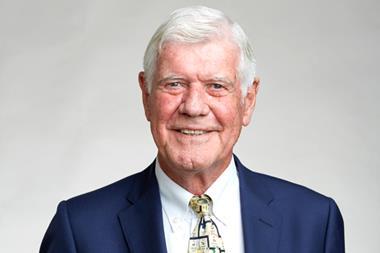Readers call for reasoned debate, reminisce about the 1960s and sing the praises of microscale chemistry
No offence
Your correspondents Anna Krylov et al, criticise RSC editorial guidelines which aim to promote diversity and inclusion, scattering words such as ‘censorship’ and ‘offended mob’, and claiming that the term ‘normal pH’ will be banned because it ‘allegedly makes most people feel excluded’.
Referencing an article by Krylov herself, terms ‘objectionable to some’ include ‘normal’ which is actually being dropped by Unilever from soap packaging because normal skin is an indefinable concept. No one has suggested that the term ‘normal pH’ in scientific literature be banned.
Krylov refers to an article in ACS Chemistry Letters where it is stated of scientific discoveries, ‘If the [discoverer] … advocated unacceptable offensive views, supported oppressive regimes, or war crimes, then one needs to carefully consider if that person deserves celebration.’ The authors then do just that with the cases of Peter Debye, Fritz Haber and William Shockley, concluding that only Shockley’s name should be removed in view of his widely expressed racist views – Krylov erroneously claims that they called for the removal of all three names.
Krylov et al refer to the withdrawal of Tomáš Hudlicky’s Angewandte Chemie article as censorship. Hudlicky claimed, against evidence, that progress in organic synthesis was being harmed by the promotion of diversity. Chemists who objected are dismissed by Krylov et al. as an ‘offended mob’.
They also cry censorship over the retraction of a piece about ‘tribalism’ in medical specialties – it was republished with better wording and an apology by the authors. Their editor notes that ‘“tribalism” [has] no consistent meaning’.
In no case was the dissemination of scientific knowledge under threat and there is no reason to expect the RSC’s thoughtful policies to differ. By all means, let us exchange ideas freely but without offence.
Les Hearn MRSC
Via email
Contact point
Andrea Sella’s article on the Podbielniak contactor set off such a trail of memories for me. I joined the BP Kent oil refinery at the Isle of Grain in 1962. While working in the white oils laboratory, I enquired about the large unpainted area on the wall of an adjacent laboratory. I was told that it was until recently the home of the Podbielniak apparatus, which had recently been replaced by a gas chromatograph. I was told how it worked, and was amazed by the relative simplicity of gas chromatography. In those days it was very Heath Robinson, with an oven, a copper tube full of brick dust coated with oil, and a thermocouple to register the temperature of the flame as the hydrogen carrier gas burned at the outlet. Yet it worked beautifully.
In the morning we would travel round the processing plants, taking gas samples in football bladders. Returning like Michelin men, we would use a 1ml syringe to puncture the necks of the bladders and take a gas sample, which was injected into the chromatograph. No sophisticated data handling of course. The afternoons were spent with scissors cutting out the paper traces and weighing the peaks. Calculation was by hand-cranked calculator, augmented by slide rule!
It was that delightful period when Victorian chemistry was giving way to modern technology. Chromatography existed alongside gravimetric and titrimetric analysis augmented by colourimetric analysis. I wouldn’t have missed that period in my chemistry career for anything. Analytical chemistry in those days was real fun and fantastic training.
Michael Baldwin FRSC
Sittingbourne, UK
Microscale at large
I was pleased to see three items (‘Lights, smartphones, action!’, ‘Experimenting in a pandemic’, ‘Rallying to the chemical safety cause’) plus an editorial on practical chemistry in our schools arrive in the September 2021 edition of Chemistry World. I hope that members in industry and academia will appreciate that the advice for schools from Cleapss and Seerc (in Scotland) is available to teachers and technicians, not only to conform with UK safety legislation but also to enable practical work to continue despite reduction in technician hours, the Covid lockdowns, restricting practical requirements from exam boards, reduction in subject CPD and a reduction in teaching time.
All three articles referred to microscale techniques, which I have had the good fortune and support from Cleapss to develop over the past 30 years. They were designed as alternative safer procedures, responding to hazardous procedures that had resulted in students attending hospital with breathing difficulties (inhaling gases) or cuts due to flying glass. Local authorities and employers were worried about public prosecutions and civil actions in our law courts.
Teachers reported that here were educational, managerial, ‘green’, sustainability and pedagogical benefits. The pandemic increased the use of these techniques as lessons had to be carried out in ordinary rooms. However, practical chemistry in ordinary rooms is common in many countries. This resulted in a two-day online conference in July 2021 organised by the Secondary and Further Education Group of the RSC, bringing together teachers and educators from South Africa, China and Mexico with UK teachers.
Microscale chemistry may be a far cry from how readers were taught, but it has kept school practical chemistry alive, relevant, up to date, sustainable, applicable to trying conditions, engaging and enabled one retired teacher (me) to be very happy developing new ideas.
Bob Worley FRSC
Via email
Chemistry World welcomes letters, which should be concise (normally fewer than 300 words) and timely. Those selected for publication are subject to editing for clarity and length. Letters should be marked ‘for publication’ and sent to chemistryworld@rsc.org
We do not routinely acknowledge letters.












No comments yet